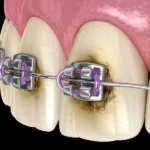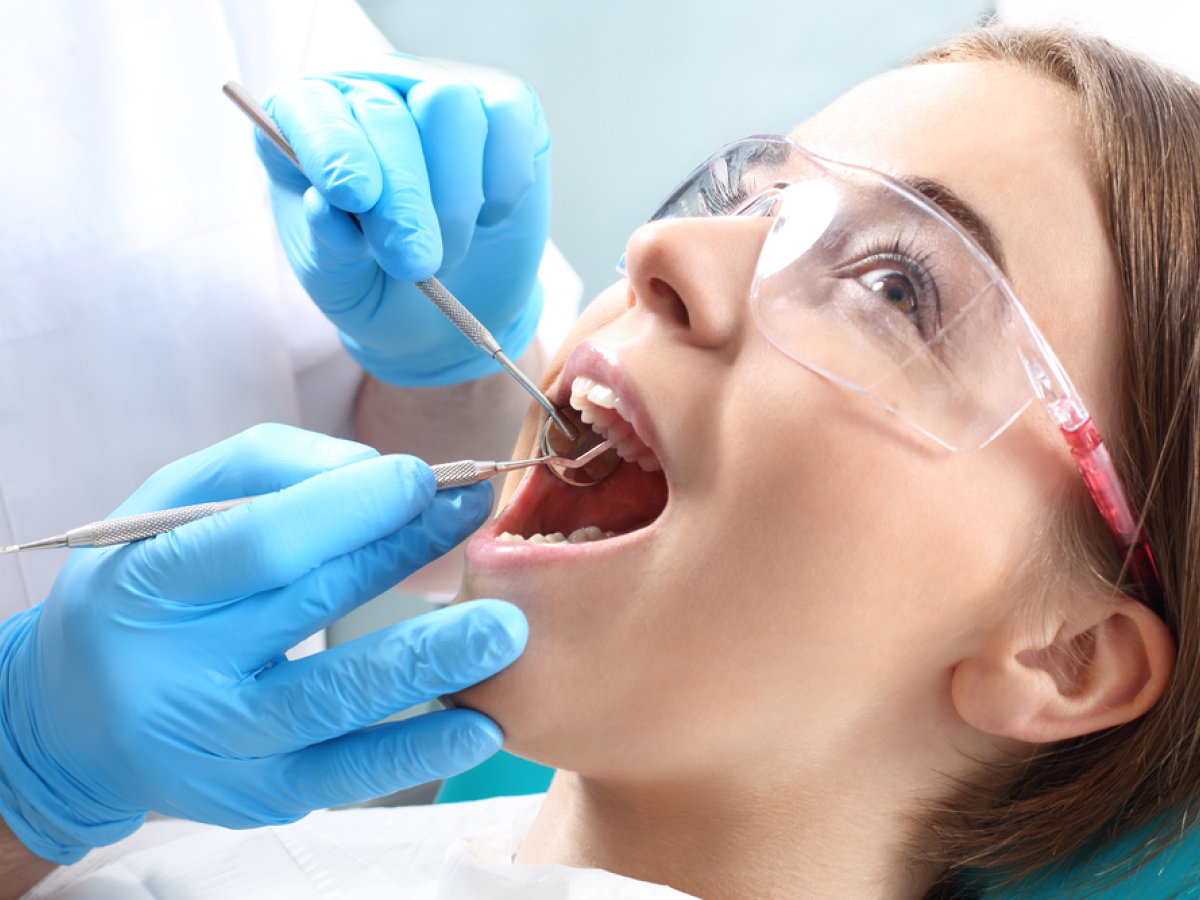Are you worry about wisdom teeth removal without sedation? If anxiety or stress is stopping you from visiting the dentist, you’re not alone. Millions of patients around the world experience nerves and discomfort, merely thinking about the dentist. However, you shouldn’t let fear stop you from achieving your picture-perfect smile. What’s the solution? Sedation dentistry. With multiple types of sedation to choose from, you can finally relax and feel confident as you take a seat in the dental chair. Push fear aside because you deserve a radiant, healthy smile too. Is sedation dentistry the right choice for you? Keep reading this helpful guide to learn all about it.
Patient’s Guide to Sedation Dentistry
Many patients that need their wisdom teeth removed experience anxiety towards the procedure; however, modern medicine allows your worries to be a thing of the past. Wisdom teeth anesthesia is a type of sedation that can be administered for patients to eliminate pain and stress. Depending on the level of anesthesia administered, you may experience a state of calmness and comfort, in which you may fall asleep on your own. In other cases, a higher level of anesthesia can be used in which you may not remember anything experienced in the procedure at all.
Understanding the different types of removal can help you to understand better the anesthesia you may need. For wisdom teeth that have already come in and are visible, the process will be quite straightforward. In this case, you may only require local anesthesia that will numb the area around the tooth. In the more complex cases where the tooth is impacted, patients will be administered a higher-level sedative to put you to sleep. This option may be the best for patients who need all four wisdom teeth removed, or have a very low pain tolerance.
Before beginning your procedure, you and your dentist will need to decide on the best option in regards to the sedation that works for you. The sedation options can be based on your level of anxiety, as well as the complexity of the procedures.
Types of Sedation Dentists Use
You have a choice of which sedation you wish to use along with the advice of your dentist. Paired with any of these sedatives, you’ll also typically need a local anesthetic, which is a numbing medicine. The dentist will use this medicine in the specified location they’re working in to remove any pain associated with the procedure. If the only reason you fear the dentist is because of your low pain intolerance, a local anesthetic may be all you need.
Inhaled Minimal Sedation:
You’ve most likely heard of the popular term “laughing gas” before. Laughing gas’s real name is called Nitrous Oxide. It’s administered through a mask that’s placed over your nose, allowing you to breathe in Nitrous Oxide combined with Oxygen. It helps the patient relax, plus the dentist can control how much sedation you’re getting. The gas wears off relatively quickly so that you will potentially be able to drive yourself home after the procedure if needed. (It’s important to note that this is the only sedation type that allows you to drive yourself home afterward.)
Oral Sedation:
This type of sedation ranges from minimal to moderate. If you’re looking for minimal sedation, you simply take a pill that’s similar to the drug Valium. It’s taken an hour before the procedure to make you feel very drowsy, yet still awake. If you’re looking for more moderate sedation, a larger dose will be given to you. Oral sedation is the most popular type of dental sedation and the one that most patients prefer. A handful of patients become groggy enough from the pill(s) to fall asleep during the procedure but can still easily be woken up with a gentle shrug.
IV Moderate Sedation:
Using an IV to pump the drug through your veins, the drug can move very quickly and effectively. Dentists are also able to continuously adjust the level of sedation you need, whether you’d like more or less during the procedure. You will be half awake but very sleepy while using IV sedation.
Deep Sedation & General Anesthesia:
General anesthesia will make you almost unconscious or fully unconscious. This means that you will be in a deep, deep sleep during the procedure. You can’t be easily woken up until the anesthesia effects wear off or a reverse medication is given. This type of sedation isn’t as common since it comes with more potential side effects, and most dentists aren’t allowed to administer it.
For simple procedures, local anesthesia is most likely the only sedation that will be needed. Local anesthesia is a numbing medication that blocks the pain transmission from the nerve to the central nervous system. This sedation can last anywhere from thirty minutes to four hours, depending on the strength of the sedation as well as the dosage. The most commonly used local anesthesia used in the dental field is called Lidocaine.
For patients who are feeling very anxious about their dental procedure, Nitrous oxide, also known as “laughing gas,” is a mixture of nitrogen and oxygen that is inhaled through a nose mask. This sedation can be used on patients of all ages and has a calming, relaxing, or even euphoric effect. Patients receiving nitrous oxide will be awake and conscious during the procedure and will have full control of, though, speech and touch. Because this sedation is an inhalant form, its effect wears off quite quickly, allowing for patients to be able to drive following their procedures.
For higher complexity procedures, conscious sedation is a more sustainable option. This type of sedation involves taking a medication that causes drowsiness and in some cases, may cause the patient to fall asleep on their own, again depending on the dosage and strength. In any case, driving home after a procedure that uses any anesthesia is not a good idea, and patients who will be administered, this medication should plan transportation to and from the dental office.
In other cases, your dentist may recommend intravenous sedation, which involves medication administered through a vein. This involves a combination of local anesthesia, and although the patient will be conscious, they may not remember much of the procedure after the sedative is administered. In any case, patients who undergo a procedure that requires the use of intravenous sedation should plan for means of transportation following the procedure as the after-effects of the sedation include grogginess.
Lastly, for highly complex procedures such as root canals, your dentist may administer general anesthesia. When being “put under,” the patients will be in an unconscious state and will have no recollection of the procedure after the effects of the anesthesia begin working. Following the procedure, the sedation can take up to a few hours to wear off, preventing patients from driving after their procedures. Plans should be made for transportation to and from the dental office to ensure the patient’s safety.
For patients who have delayed procedures such as root canals and wisdom teeth removal, sedation may be able to help you calm down and relieve your anxiety towards the procedure.
What Kind of Sedation Do I Need for Teeth Removal?
Sedation dentistry can help any patient who experiences one or more of the following:
- Dental anxiety, stress, or fear
- Extremely sensitive teeth
- Overactive gag reflex
- Difficult time sitting through dental procedures
- Wanting to accomplish several procedures in one sitting
- Requires complex or lengthy dental work
Children are also great candidates for sedation dentistry if they refuse to cooperate or are beyond terrified of the dentist. Nitrous Oxide is safe for kids to take, and any dentist can administer it. Some pediatric dentists are trained to give kids oral sedations, which are completely safe when given the right dosage based on a child’s weight and height. Ask your dentist for the best plan of action if you are having difficulty getting your child to cooperate.
Is Sedation Dentistry Safe?
There is always a slight level of risk involved whenever you’re dealing with sedation. However, when given by professionally trained dentists, it’s typically very safe if you’re a healthy individual. For those individuals who are obese or have sleep apnea, they should consult with their primary care doctor first since they’re way more likely to develop complications from anesthesia.
The best way to ensure you’re safe is to be a smart patient:
- Always make sure that your dentist is qualified and trained to administer the type of sedation you are receiving.
- Before the procedure begins, you and your dentist should review all of your medical histories and know which medications you’re currently taking.
- Ask as many questions as you want. (Find out how many times your dentist has given sedation, the more, the better! Ask what dose you’ll be getting and whether it’s within FDA limits.)
- Make sure you get a form that outlines the risks of the sedation/procedure. Read it thoroughly and carefully.
- Ensure the dentist has oxygen on hand to reverse the effects of sedation if needed. Your dentist should also closely monitor vital signs during the entire procedure.
- Dentists should always be following all of the American Dental Association guidelines.
What Are Dental Anesthesia And Sedation Options?
Modern dentistry has made incredible strides in recent decades, especially when it comes to dental anesthesia and sedation. There are several types of medications that are widely available to patients today needed to help them become more relaxed and more comfortable during a surgical procedure. While some medicines are tasked primarily with controlling pain, others are used to relax the patient. Some drugs are used to induce deep sleep during routine dental treatment. That said, the patient and the dentist would usually discuss some factors when deciding which type of anesthesia or sedation will be best. For example, the type of procedure that is being performed as well as the patient’s overall health and any history of allergies along with overall anxiety levels, are all considered when determining the best type of sedation or anesthesia.
Targeted Anesthesia For Limited Dental Treatments
About pediatric dentistry, some dental care providers will recommend that a child is given anesthesia or sedation so that the dental procedure may be completed safely. Whether it is pediatric dentistry or a dental procedure for an adult, some options may be considered. For example, local anesthesia is a particular type of anesthetic that is often used as a way to prevent pain in a specific target area of the patient’s mouth. In essence, local anesthesia blocks the nerves that the body uses to sense and transmit pain to the brain. When the mouth tissue and the nerve itself are numbed, the patient feels virtually no pain. When local anesthesia is used, your dental care provider will usually first apply a topical anesthetic that is intended to numb the area before local anesthesia being injected.
Topical Anesthetics
Also, topical anesthetics may be used as necessary to reduce the pain associated with mouth sores. Injectable anesthetics are commonly applied for procedures such as filling cavities or preparing a tooth that requires gum disease treatment or the placement of a crown. In addition to anesthesia and sedation used at the time of surgery, patients may need a pain reliever following dental treatment. This is where analgesics can be used to relieve pain. Patients may be prescribed either narcotic or nonnarcotic type of painkillers. Narcotic analgesics are considered opioids and target the central nervous system directly as a way to relieve pain.
Analgesia Is Usually Used For More Severe Pain
This type of analgesia is often used when more severe pain is involved. Conversely, nonnarcotic analgesics are frequently used to relieve the pain associated with toothaches and where a routine dental procedure has been performed. Nonnarcotic analgesics include non-steroidal anti-inflammatory drugs like ibuprofen as well as acetaminophen and over-the-counter aspirin. When taking this type of medication, it is crucial to properly store and dispose of any unused medicines as advised by your dental care provider. This is especially true if children are present in the household.
When Do I Need Sedatives?
In some cases where a patient has a particular type of dental procedure, sedatives may be used. Sedatives are primarily intended to induce a moderate level of sedation in the patient. They can be administered before or during a dental procedure. The administering of sedatives can include inhalation, as in the case of when nitrous oxide is used. Conversely, sedation can be applied orally by the patient taking a pill or intravenously by the patient receiving an injection. When more complex cases or in-depth oral surgery is performed, other types of drugs may be used as a way to induce deep sedation. Reducing consciousness is sometimes needed as a way to relieve pain and any excess anxiety. General anesthesia may be required in some instances involving oral surgery or other more complex treatments. General anesthesia typically results in temporary loss of consciousness so that no pain or anxiety is experienced.
How Safe Is Sedation?
Today’s modern dental care providers have access to a full range of pain and anxiety-related control techniques, as discussed here. With millions of patients treated each year safely, anesthesia and sedation play a significant role in overall dental care, health, and wellbeing. That said, patients should understand that taking any medication, including anesthesia or sedation, comes with some amount of risk. Talking with your dental care provider is the best way to know for sure any of the risks that are involved. The American Dental Association urges patients to always take an active and participatory role in their oral healthcare. This means talking with your dental care provider on some subjects, including anesthesia and sedation options.
Working closely with the oral surgeon is always the best way to make the most informed decision when it comes to sedation and anesthesia. Together with your dental professional, you can choose the most appropriate ways to make your dental treatment or oral surgery as comfortable and as safe as possible. Contact your dental care provider today to learn more about all of the ideas and concepts discussed here.
Sedation Dentistry
According to a study in the Journal of Dental Hygiene, approximately 19% of people report moderate to high anxiety when it comes to dentistry. This statistic aligns with previous research, which suggests that 10 to 20% of adults suffer severe anxiety even when it comes to routine dental procedures, while 50 to 80% of patients report at least mild anxiety. The consequences of dental anxiety are far-ranging and have real effects. 9 to 15% of anxious patients avoid seeking dental care — which can lead to long-term dental and health issues.
If you or a loved one is avoiding necessary dental work due to anxiety or phobia — or simply experiencing unnecessary stress before procedures — there is a solution. Sedation dentistry offered by qualified dentists and anesthesiologists can help you stay calm, relaxed, and anxiety-free during a procedure. For most people, sedation dentistry is a safe and effective alternative to needless fear and anxiety — and can be a powerful asset for those undergoing intensive oral surgery procedures. How does it work? And who is it right for? Let’s take a closer look at sedation dentistry:
Why Patients Seek Sedation Dentistry?
Dentists, orthodontists, periodontists, and other oral health professionals do their best to help patients feel calm, relaxed, and in control. By using local anesthetics during procedures, they help mitigate any pain a patient might feel. Also, good dental professionals work hard to project a calm and relaxed atmosphere for patients.
However, many professionals have begun to also offer sedation dentistry as a way of giving their patients an even more relaxed experience. Everyone has a different reason for seeking sedation dentistry.:
- Previous unpleasant or traumatizing experience with a dentist
- Fear of needles and injections
- Fear of experiencing pain at the dentist
- Feelings of helplessness or vulnerability
- Embarrassment or shame
Also, sedation dentistry may be appropriate for children who would have a difficult time sitting still throughout a lengthy procedure. In other cases, sedation dentistry techniques enable a practitioner to get more work done in one appointment, which may be convenient for the patient.
Procedures that Can Be Done with Sedation Dentistry
Although dental anxiety and apprehension may compel patients to seek sedation dentistry, you don’t need to suffer anxiety or phobias to request this technique. Many patients find that it simply offers them a more relaxed and pleasant dental experience altogether. Regardless of what your dental visit involves, you may benefit from this procedure.
Special procedures. If you have a root canal, extraction, or oral surgery upcoming, you might find that sedation helps you get through a long procedure more comfortably. Since some common procedures like root canals may take 90 minutes, you might find that you’re more comfortable being sedated throughout the process.
Routine procedures. For those who truly feel discomfort or anxiety about even routine procedures — tooth cleaning, cavity-filling, examinations — sedation might offer you a way to relax throughout the process.
The Different Levels of Sedation Dentistry
There is considerable variation in the degree of sedation you can request and receive from your oral health team. Based on your level of anxiety, medical considerations, and careful consultation with your dental team, you may receive one of these levels of sedation:
Minimal Sedation
Minimal sedation is often effective for patients with only slight anxiety or apprehension who would like to feel more tranquil and relaxed during their appointment simply. While minimally sedated, you will still be able to respond to your environment and your dentist’s instructions. Your coordination and cognition will be diminished, but you will still be able to hear and feel what’s going on around you. In other words, though you will feel very relaxed and calm — you will regain consciousness the entire time.
In minimal sedation, your cardiovascular and respiratory systems won’t be affected, which means you’ll be able to breathe normally without any assistance.
Often, mild sedatives will be administered via the enteric route — which means that you will ingest the sedative in a pill or a liquid form. Sometimes the enteric sedative will be given alongside nitrous oxide (laughing gas).
Moderate Sedation
If you and your dentist decide that an increased degree of sedation will be useful to you, then moderate sedation is the next step. Under moderate sedation, you will still be able to respond to tactile stimulation (touch) and your dental team’s instructions. Though you will still be conscious and able to breathe independently, you will be less “awake” than if you had received minimal sensation. You might even be relaxed enough that you fall asleep during the procedure.
In many cases, dentists use a combination of intravenous (IV) sedatives along with nitrous oxide inhalation to produce the lowered consciousness of moderate sedation. Throughout, they’ll give these drugs at incremental amounts in a process called titration to ensure you read the desired level of sedation — without losing consciousness.
Deep Sedation or General Anesthesia
Deep sedation
This level of sedation is sometimes recommended for patients who have high dental anxiety. It’s also useful for children who may be unable to sit still or cooperate with a procedure. Also, it can be helpful for those who are receiving lengthy oral surgery procedures.
During deep sedation, you will not be entirely unconscious — but you also won’t be easily aroused by a stimulus. In some cases, your dental team will need to help you maintain an airway, though your cardiovascular system probably won’t be affected. Afterward, you probably won’t have much memory of the procedure.
General anesthesia:
As the deepest level of sedation, general anesthesia means that you will entirely lose consciousness. Your dental team will set you up with ventilation so that you can breathe, and they might also help monitor your cardiovascular function. You will have no recollection of the procedure and will not respond to stimuli at all during the procedure.
What to Expect During Sedation?
You can expect to receive a thorough evaluation from your dental team before you receive sedation. Also, you’ll be coached beforehand on whether or not you should fast before the procedure. Finally, your dental team will talk to you about the recovery process and ensure you have somebody ready to drive or accompany you home, depending on the level of sedation you receive.
In some cases, you may need to get medical clearance from your physician if you have a condition like hypertension, heart disease, high blood pressure, or diabetes.
If you have a medical condition that means sedation doesn’t work for you, make sure to talk to your dental team about other coping mechanisms that might help you get through treatment. Deep breathing techniques, meditation, and simply becoming educated about the procedure can help you get through the appointment.
Seek Sedation Dentistry from a Qualified Practitioner
The American Dental Association requires that dental teams seek adequate training and qualifications before performing sedation dentistry. For example, a dentist would need to either use the services qualified anesthesiologist or receive training even to administer minimal sedation. As levels of sedation increase, training requirements increase as well. Even if a dentist uses an anesthesiologist’s service, the dentist would need to maintain up-to-date Basic Life Support training to give any level of sedation.






